After years as Digital First AI, we are happy to announce our rebrand to DFIRST AI. This rebranding reflects our expanded focus on AI-driven creative tools and our commitment to new possibilities for creators everywhere. Try our new platform for free.
Marketing Campaigns 101: How to Plan, Launch, and Optimize for Success
Discover how to craft and optimize successful marketing campaigns, from goal-setting to tracking metrics. Features top brand examples.
Sonu kalwar
Share:
Remember when Snoop Dogg shocked us all by hanging up his lighter?
Or when Barbie showcased her transcendence from a mere toy to an icon?
These unforgettable marketing campaigns from last year perfectly illustrate the power of a well-executed marketing push.
As the landscape continues to evolve, you may ask, "How can I create marketing campaigns that people won't forget?"
Fear not, marketer! We're about to dive into "creating an epic marketing campaign."
According to a study by the Content Marketing Institute, 72% of content professionals agreed that having a good marketing strategy was a major key to their success (CMI, 2023).
The dazzling success of past campaigns doesn't strike by chance; it's the product of savvy marketing know-how.
If stats like these pique your interest, I have some good news: this article will equip you with tools, resources, and templates to master the art of memorable, effective marketing campaigns.
Ready to take the plunge?
Planning your marketing campaign

When planning your marketing campaign, start with your goals.
Ask yourself: What do you want to achieve?
It could be increasing sales, improving brand recognition, or launching a new product.
Your goals are the foundation upon which your strategy is built.
Next, it's time to talk about budget. Be realistic; what can you afford to spend?
Remember, even a modest budget can go far with smart planning.
Allocate your funds wisely across campaigns, ensuring you get the best bang for your buck.
Now, let's tackle strategy:
Identify your target audience. They're the heart of your operations. Who are they? What do they need?
Choose your channels: Based on where your audience hangs out,. Is it social media, email, or perhaps a mix?
Craft your message: Make it resonate. Speak directly to your audience's desires and pain points.
Timeline: Set yourself a schedule. When will you execute each part of your campaign?
It's like you're piecing together a puzzle, with each part essential to the bigger picture.
And hey, if this is your first crack at this, don't fret!
Each campaign is a learning curve, paving the way to even greater successes down the road.
Keep your ear to the ground, adjust as you go, and remember, your message is powerful.
With a little gumption and a lot of planning, you're sure to see results.
Target audience
A target audience is your ideal customer group, chosen based on shared traits like age, interests, & goals.
Think of it as aiming your message at the bullseye, not the whole dartboard.
Imagine your bakery. Who grabs those fresh pastries? Identifying your target audience is like finding the map that guides your marketing.
Start with the basics: Who walks through your door? Are they young professionals grabbing breakfast? Jot down their age, interests, and buying habits.
Go deeper: What motivates them? Are they health-conscious with a sweet tooth? Do they visit after workouts? Understanding their values and lifestyle refines your focus.
Location matters: Are you nestled in a vibrant city neighborhood? Local residents craving artisanal breads might be your sweet spot.
Remember, you're not just baking - you're creating an experience.
Your target audience?
They savor every bite. Finding them leads your marketing straight to their hearts (and stomachs).
Customer journey map
A customer journey map is like a roadmap of your customer's experience, showing their thoughts, feelings, & actions at each touchpoint (website, store, etc.).
It helps businesses understand their customers better & design smoother journeys, leading to happier customers & more sales.
Why is this important?
Think of it as putting yourself in your customers' shoes to experience what they go through when interacting with your brand.
Let's say you run a bakery. You'd start by charting key touchpoints,, like seeing your ad on social media, visiting your website, or walking past your bakery and being lured in by the scent of fresh bread.
Each stage from awareness, consideration, and decision to the post-purchase experience should be mapped out.
Awareness: A potential customer spots your ad for a chocolate cake on Instagram.
Consideration: They visit your website and read customer reviews about your delicious cakes.
Decision: Encouraged by a birthday promotion, they decide to order online.
Post-Purchase: After devouring the cake, they receive a follow-up email thanking them for the purchase and offering a discount on their next order.
Remember, this isn’t just about the purchase; it’s about crafting that warm and inviting experience that makes them crave your pastries.
By drawing up a customer journey map, you'll be able to identify gaps and opportunities in the customer experience.
For example, if customers are abandoning their carts, that's an area to investigate.
Could it be that your checkout process is too clunky?
Or maybe they're not ready to commit and need a gentle nudge — think of sending an enticing email with a muffin recipe and a coupon to bring them back.
Embrace this tool, and use it to ensure every interaction with your brand is as sweet as the treats in your display case.
SMART goals
SMART goals are action plans for success! They're Specific, Measurable, Achievable, Relevant, & Time-bound.
This helps you stay focused, track progress, and achieve what you set out to do.
Let's break it down:
Specific: Your goals need clarity. Instead of saying "sell more cakes," try "increase custom cake sales."
Measurable: Attach a number to track progress. Maybe it's "boost custom cake sales by 20%."
Achievable: Set goals within reach. If you've only increased sales by 5% annually, a 20% jump is a stretch, but doable with the right tactics.
Relevant: Make sure your goal matters to your business's success. Boosting custom cake sales should translate to higher profits, not just busier ovens.
Time-bound: Set a deadline. "Increase custom cake sales by 20% within the next quarter."
Imagine you run a charming little bakery.
You've got a knack for creating delectable custom cakes that leave people coming back for seconds.
But you don't just want to make your customers smile; you want to strike gold with your sales.
So you set a SMART goal: Increase custom sales by 20% in the next quarter.
By setting this type of goal, you've crafted a clear path to walk on.
You're not wandering in the wilderness of wishful thinking; you've got a roadmap, a destination, and a timeframe.
It's all about making your dreams digestible—one SMART bite at a time.
Marketing campaign brief
A marketing brief is a roadmap for campaigns, outlining goals, target audience, messaging & budget.
It's like a GPS for your marketing team, ensuring everyone's on the same path to success.
Let’s take the bakery business as an example.
Objective: Your goal is straightforward: to make your bakery the talk of the town.
You’re aiming to increase foot traffic by 30% and boost sales by 15% within the next quarter using a blend of traditional and digital marketing strategies.
Target Audience: You know your customers like the back of your hand – they're sweet-toothed, community-focused, and love a personal touch.
Tailor your message to the local families and young professionals within a 5-mile radius.
Key Message & Call to Action (CTA): Craft a mouthwatering message that showcases your bakery's unique flavor.
Use taglines like ‘Indulge in Homestyle Baking’ to entice your audience. Your CTA? "Drop by for a free taste of our new cupcake range!"
Channels & Tactics:
Social Media: Create a buzz with behind-the-scenes content, baking tips, and flash sales.
Email Marketing: Send out weekly newsletters featuring coupons and the story behind your ‘Pastry of the Week’.
Local Events: Participate in community events to showcase your treats and brand personality.
Timeline & Milestones: | Week 1-2 |
Finalize creative materials and set up social media calendar. | Week 3-4 |
Launch email campaign and participate in a local food fair. | Week 5-6 |
Analyze the results and adjust the strategy accordingly.
Budget: Allocate your dough wisely: $2000 for social media ads, $1000 for email marketing setup, and $500 for event participation.
Remember, your marketing brief is your guide, not a strict rulebook.
Stay flexible, monitor your campaign's performance, and be ready to whip up a new strategy if needed.
Let's bake your campaign to perfection!
Developing your marketing campaign
Developing your marketing campaign" involves crafting a plan to reach your target audience and achieve specific goals.
This includes defining objectives, understanding your audience, crafting your message, choosing channels, launching & measuring results.
In crafting a marketing campaign, you'll breathe life into your brand's story.
Let’s slice into the specifics for a bakery business, tapping into the ingredients that make campaigns resonate with customers.
1. Creatives
Creatives are the attention-grabbing elements of your campaign: images, videos, text, even sounds, designed to resonate with your target audience.
Your creatives are the bread and butter of your campaign, essential for captivating your audience.
For your bakery, imagine custom illustrations of pastries that are as delectable to look at as they are to eat.
Your creatives set the stage, so they must be distinctive and memorable.
2. Creative theme
The theme of your campaign is your oven's highest setting—it's what gets things perfectly golden brown.
A bakery's theme could be "Home-baked Happiness," conveying warmth and nostalgia.
Every creative piece should bake in this central idea, from your slogans to your social media posts.
3. Value proposition copies
Value proposition copies in marketing are like echo chambers in sales.
They repeat the core benefit your product/service offers, but adapted to different channels & audiences.
Imagine a catchy slogan on TV & a detailed explanation on your website, both highlighting why you're the best choice
It's crucial to communicate why someone should choose your cherry pie over the others.
Highlight unique ingredients, a secret family recipe, or your commitment to local farmers. Make every word count like every ingredient in your kitchen.
4. Graphics and videos
Graphics & videos are marketing powerhouses! Images grab attention, explain complex ideas, & spark emotions.
Videos tell stories, build trust, & boost engagement.
Use them together to captivate your audience & leave a lasting impression.
Short, snappy videos of the baking process or high-resolution images of your signature confections can lure customers like a visual feast.
Use infographics to share fun baking tips or the journey of your goods from flour to table.
5. Marketing channels
Marketing channels are the paths you use to reach your target audience & deliver your message.
Think of them as roads leading to your customers, like social media, email, websites, or even billboards.
Choosing the right ones depends on your audience & goals, creating a multi-channel mix for wider reach & impact.
Selecting channels is like picking the right pastry case.
Should you focus on Instagram for its visual appeal or use email marketing for personalized promotions?
You know your patrons best; choose where they hang out and what whets their appetite for news and deals.
6. Marketing metrics
Finally, metrics are the measuring cups of your campaign's success.
Track email open rates, foot traffic increases during promotions, or social media engagement.
It's not just about the numbers, but understanding your customer's journey—did they stop and savor the taste or walk on by?
Remember, your marketing campaign is a special recipe you're sharing with the world.
Get creative, stay true to your brand’s flavor, and keep an eye on the oven (your metrics). Your customers will keep coming back for more.
Types of marketing campaigns
When you're trying to make a splash in the market, understanding different types of marketing campaigns is like knowing the right ingredients for your favorite dish.
It's all about mixing the perfect blend to dazzle your audience.
Here's a quick guide to help you nail your next campaign:.
1. Product launch campaigns
This is all about the big reveal. A grand entrance into the market, creating buzz around a new product.
Your strategy here needs to be bold and comprehensive, reaching all possible touchpoints of your target audience.
Some examples of a successful product launch campaign:
Heinz + Absolut Tomato Vodka Pasta

This unlikely duo capitalized on a viral trend, creating a limited-edition sauce and social media buzz. It highlighted the potential of unexpected partnerships.
2. Seasonal marketing
Seasons change, and so should your campaigns. From Valentine's Day to holiday specials to summer sales, your marketing needs to align with the timing.
It keeps your brand relevant and can spike sales when customers are already in the mood to shop.
Some examples of a successful product launch campaign:
Snickers + Lemonade's Halloween Campaign
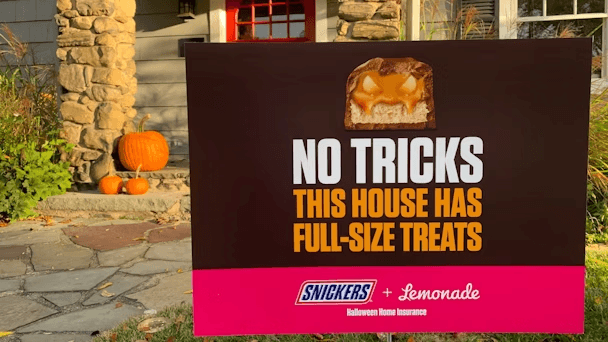
This social media campaign offered free lemonade in exchange for funny Halloween costume fails, generating user-generated content and brand engagement.
3. Brand awareness campaigns
These are long-haul campaigns.
They're not about the quick sale; it's the slow burn, increasing visibility and recognition in your market. Think billboards, sponsorships, and content marketing.
It's a marathon, not a sprint.
Some examples of a successful product launch campaign:
Patagonia's environmental activism

This brand consistently advocates for environmental protection, resonating with consumers who value sustainability and authenticity.
4. Social media campaigns
If your audience is scrolling, you should be rolling out content to meet them where they are.
Platforms vary, so tailor your content and be sure to engage. It's not just about pushing your message, it's about creating conversations.
Purpose: The goal you're aiming for, like launching a new product or boosting seasonal sales.
Strategy: Your game plan and how you'll approach the campaign to reach your objectives.
Market: Knowing your audience is crucial; cater to their needs and where they spend their time.
Duration & geography: Are you going local, national, or global? Time-bound or ongoing?
Each campaign has its own unique rhythm; you just need to find the beat that resonates with your audience.
Remember, don't just follow trends; understand your customers and how your campaign can add real value to their lives.
Some examples of successful social media campaigns include:
Nike's #DreamCrazier
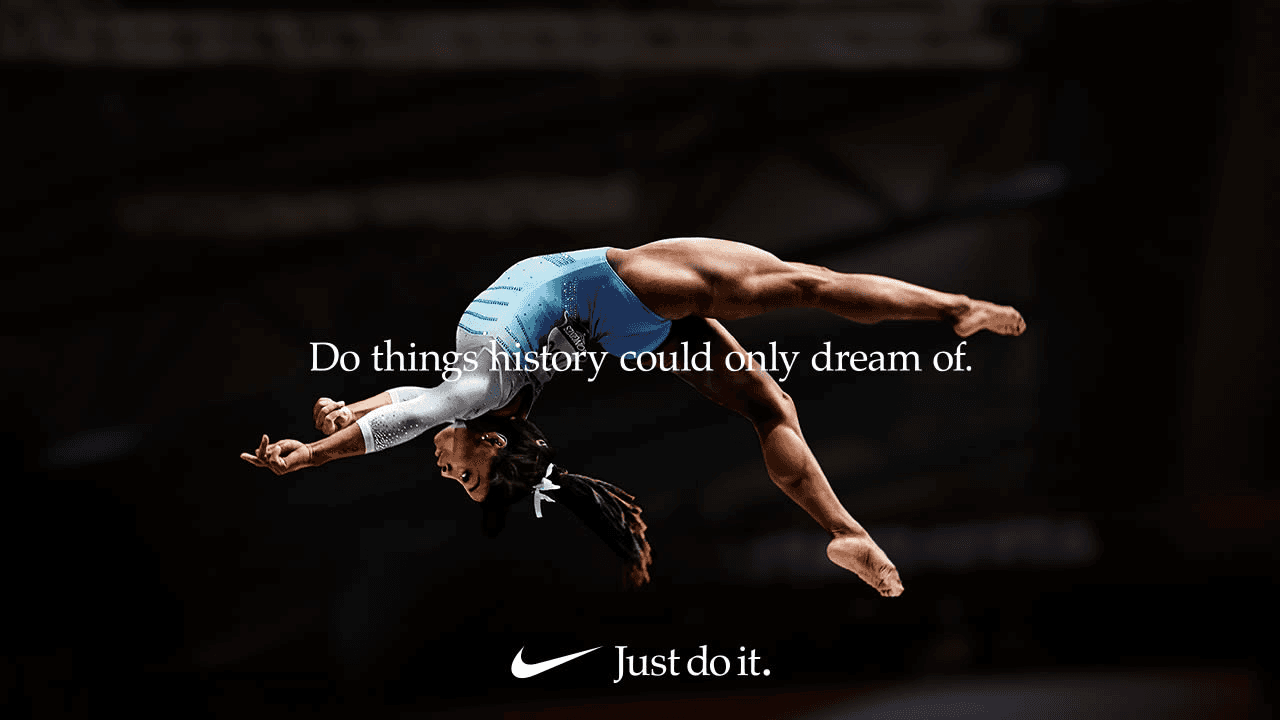
This powerful video addressed gender inequality in sports, resonating with athletes and igniting a cultural conversation, boosting brand image and sales.
Apple's #ShotOniPhone
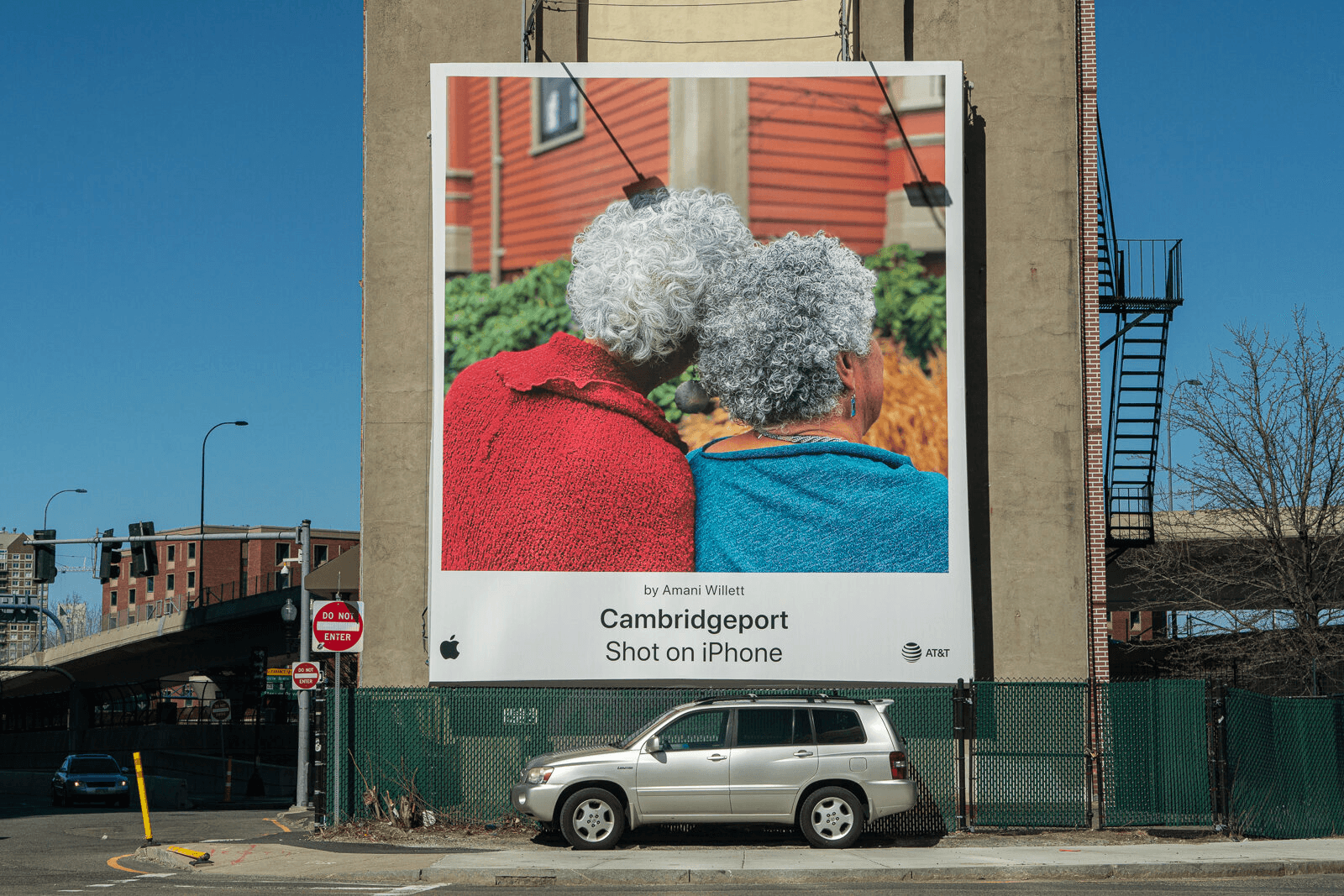
This ongoing campaign showcases stunning photos taken on iPhones, empowering users and subtly promoting camera quality, leading to organic reach and brand trust.
Marketing campaigns by channel
Choosing the right channel for your marketing campaign is like picking the right tool for a job—it can make all the difference.
Each channel has its own strengths and lends itself to specific goals.
Let's dive into some of the most effective channels and how you can use them to your advantage.
Use our channel strategy template which helps you create a successful marketing plan by identifying the most effective channels to reach your target audience.
1. Content marketing campaign
For your content marketing campaign, you're aiming to provide value through informative and engaging material such as blogs, gated content, persona landing pages etc.
Here's an example of a successful content marketing campaign:
Shopify's Content Hub
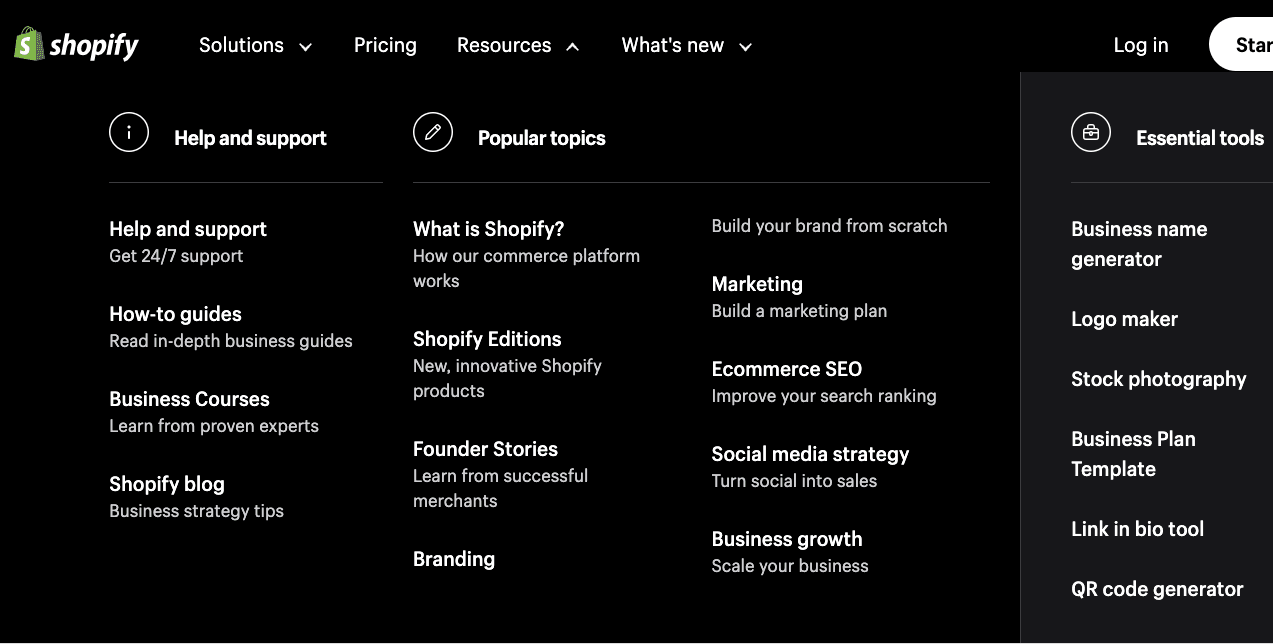
They offer various resources like blogs, ebooks, templates, and courses, all targeted towards helping their audience succeed in e-commerce.
This creates a valuable one-stop shop for relevant information and builds trust with potential customers. They also feature insights from other sources, such as a Shopify review by Cybernews, to help users make informed decisions about their platform.
Unbounce's "Page Fights"

This interactive series pitted landing page designs against each other, sparking discussions and engagement within their community.
It generated excitement, increased brand awareness, and provided valuable insights.
2. Social media marketing campaign
In a social media marketing campaign, your personality shines through.
Look at Dos Equis's use of the Most Interesting Man in the World character, which created a series of memorable moments shared across social platforms.

This content-driven email series offered valuable beauty tips and insights, building a strong community around the brand and driving sales.
Airbnb's "Host with Heart" Campaign

This storytelling campaign highlighted the human connections fostered on their platform, leading to increased host sign-ups and positive brand sentiment.
4. Paid advertising campaigns
Paid advertising campaigns put you directly in the viewer's line of sight.
Ahrefs effectively employs YouTube ads that capture attention and drive traffic to their website.
Here's an example of a successful paid advertising campaign:
Monday.com
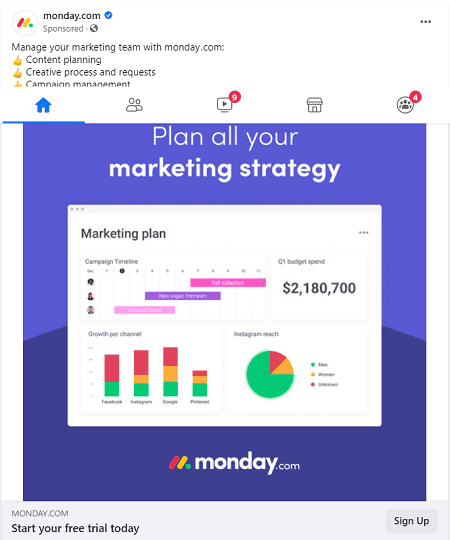
Monday.com used Facebook ads showcasing the platform's features and benefits with clear calls to action.
It was a success as it reduced cost per acquisition by 50% and achieved significant sign-up growth.
5. Influencer marketing campaigns
Influencer marketing campaigns harness the credibility of individuals who can influence your target audience.
Here's an example of a influencer marketing campaign:
Clif Bar

Clif Bar fosters long-term partnerships with outdoor adventurers who align with their active lifestyle brand.
This authenticity builds trust with their target audience and encourages organic product integration within engaging content.
Check out 5 real-world examples of brands winning with influencer marketing here.
6. SEO campaigns
Lastly, your SEO campaigns help you climb up the rankings in search engines.
By optimizing your site as Google guidelines suggest, you can organically boost your visibility.
Here's an example of a successful SEO campaign:
Canva
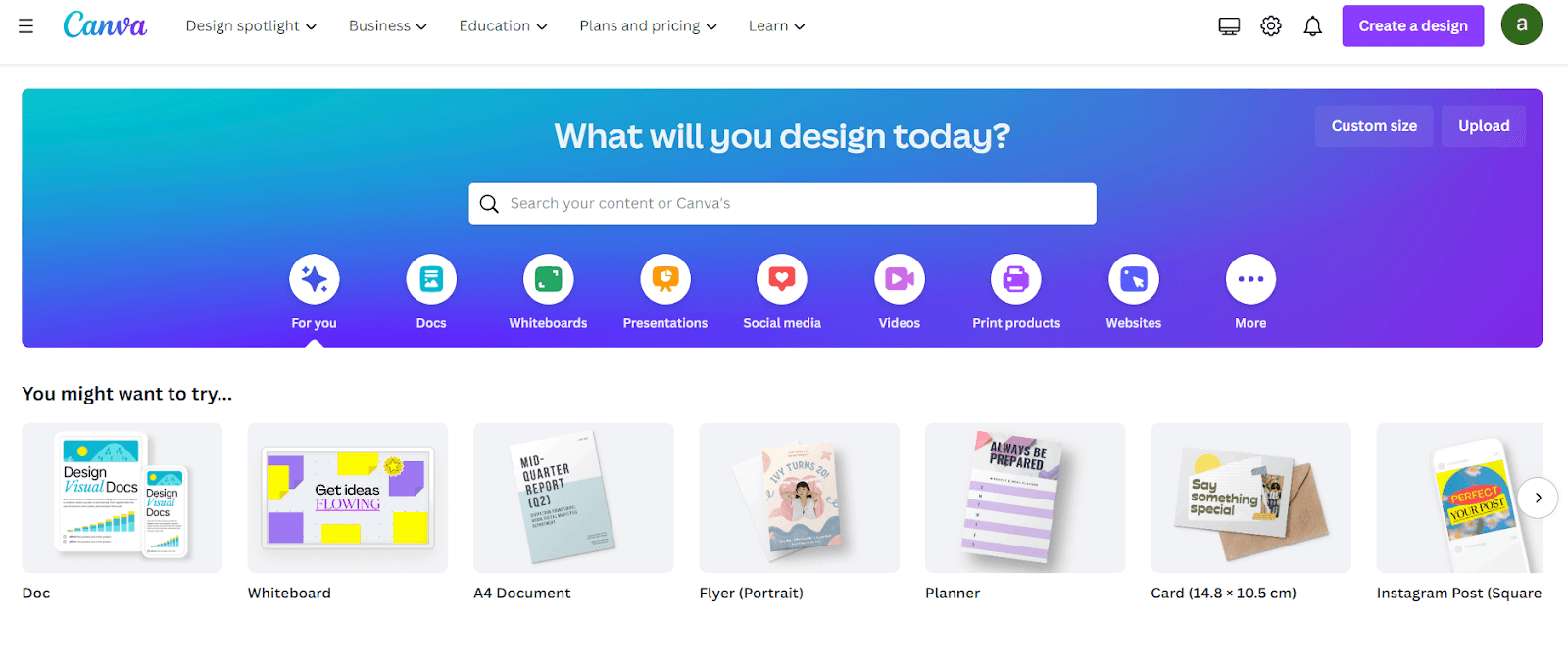
Canva, the design giant, didn't just rely on awesome tools. They used SEO magic to skyrocket.
Here's how:
Mind Reading: They figured out what people searched for and made content that matched it perfectly.
Scalable Pages: They built landing pages for both general and specific needs, catching everyone's attention.
Backlink Power: They got other websites to link to them, making them look super important in search results.
This made Canva an authority figure in the design world, ranking higher and attracting more users.
So, next time you search for design magic, remember: understand your audience, make targeted content, and build trust online.
Marketing campaigns by purpose
Crafting a marketing campaign requires a clear understanding of its purpose.
Each campaign type serves a unique role in your marketing strategy, whether you're aiming to attract new users or strengthen relationships with existing customers.
1. User acquisition
To attract new users, user acquisition campaigns focus on reaching potential customers and converting them.
Think targeted ads and sign-up incentives.
Consider leveraging platforms where your audience spends their time and creating messages that resonate with their wants and needs.
2. Product/service awareness
For product and service awareness, the key is to inform and educate about what you're offering.
Use eye-catching visuals and clear messaging to showcase the benefits.
This could mean a mix of social media buzz, informative blog content, and perhaps an intriguing PR stunt to spark interest and conversation.
3. Building community
Building community campaigns is all about nurturing a sense of belonging and connection.
Encourage engagement through social media hashtags, user-generated content, and forums.
Show your audience that you listen and that their input matters by highlighting their stories and feedback.
Use our community-building template to build a strong, engaged community that supports your brand and enhances your online presence.
4. Customer retention
When developing customer retention campaigns, focus on keeping your existing customers engaged and satisfied.
Personalized email newsletters, loyalty programs, and exclusive offers can make your customers feel valued and more likely to stick around.
5. Upselling/cross-selling
Campaigns aimed at upselling or cross-selling present additional value to existing customers.
Make recommendations that complement previous purchases and illustrate the benefit by saying something like, "Customers who bought this also loved this."
It's a way of providing a more comprehensive experience. Check out 10 upselling tactics you should be using on demand.
6. Product launch
Creating excitement around a product launch involves teasing your audience with sneak peeks and launch events.
Get influencers on board, create a countdown on social media, and build anticipation.
Your goal is to make this launch look like the event of the year.
7. Customer referral
Lastly, customer referral programs leverage your existing customer base to attract new ones.
Offer incentives for referrals that both existing and new customers benefit from.
Make it a win-win situation with rewards that could range from discounts to exclusive access.
Marketing campaign by geography
When crafting a marketing campaign, where your audience is located can be as crucial as who they are.
We're diving into how geographical targeting can make or break a campaign, focusing on local and international approaches.
1. Local campaigns
Think of a local campaign as your neighborhood block party—it's personal, it's tailored, and it's where you have the home-field advantage.
You've got to really know the quirks of your area; what the locals love, the community events that stir a buzz, and even the traffic patterns that might dictate when a billboard gets the most eyes.
Let's say you run a coffee shop in Seattle—you'd want your adverts to evoke that cozy, rain-soaked feel that speaks to the city's java-loving residents.
2. International campaigns
Now, imagine you're throwing a party that the whole world's invited to—daunting, right?
With international campaigns, you're playing on a big stage.
It’s about understanding a kaleidoscope of cultures, holidays, and even humor. Embrace local languages, customs, and address the unique needs and wants of each region.
If you're selling winter gear, for instance, your ad imagery in Canada will starkly differ from what you showcase in Australia—you've got to strike the right chord across different climates and continents.
Marketing campaigns by duration
The duration of your marketing campaign can heavily influence its effectiveness and impact.
Whether you're planning a long-term strategy or looking for immediate results, understanding the distinction is crucial for your business's success.
1. Long-term
Long-term campaigns are characterized by their strategic approach, focusing on goals such as brand building or establishing a strong market presence.
You might recall how Procter & Gamble's "Thank You, Mom" campaign built deep emotional connections over years, leaving a lasting impression with consumers.
https://www.youtube.com/watch?v=rdQrwBVRzEg
Your long-term strategy should evolve with your brand, and it can benefit from a well-structured marketing timeline, as planning for each season may require different approaches.
These campaigns need consistent monitoring and tweaking but can significantly bolster your brand's reputation and equity.
Advantages of Long-term Campaigns:
Builds a strong brand presence
Fosters customer loyalty over time
Allows for evolving strategies and adaptability
Key Considerations:
Requires more resources and planning
May take longer to see tangible results
Needs regular tracking and adjustments
2. Short-term
On the flip side, short-term campaigns are often tactical, aimed at driving immediate results such as sales spikes, event promotions, or product launches.
A prime example is a campaign tailored to Black Friday sales, designed to generate a quick influx of revenue.
Short-term campaigns also possess unique benefits, like providing immediate feedback on campaign effectiveness and allow you to react and iterate rapidly.
These campaigns are perfect for targeting specific short-term goals and can act as a litmus test for what gets your audience's attention the quickest.
Advantages of Short-term Campaigns:
Drives immediate results and sales
Test and learn quickly from audience feedback
Flexibility to adjust tactics on-the-go
Key Considerations:
The impact may be fleeting without long-term reinforcement
Requires intense focus and quick execution
Relies on timely relevance to your audience
When planning your campaigns, think about your goals, resources, and the timeframe that best aligns with your objectives.
Whether you're nurturing a long-term vision or accelerating growth with quick wins, the length of your campaign is a strategic choice that matters as much as the message itself.
Marketing campaigns by market
In the world of marketing, your approach can change drastically depending on whom you're trying to reach.
Distinguishing between B2B and B2C markets is crucial, as each requires a tailored strategy to effectively engage a specific audience.
1. B2B: Targeting businesses
When you're targeting businesses, it’s all about building relationships.
Your campaigns need to center on creating value and trust. Focus on long-term engagement and educational content.
For example, if your product increases productivity, a compelling email marketing sequence that offers insights on efficiency could be the key to nurturing that business client.
Initiatives often seen in successful marketing campaigns include whitepapers, webinars, and case studies that can help in illustrating the effectiveness of your solutions.
Check out our SaaS marketing playbook here.
2. B2C: Targeting consumers
Direct your energy towards emotional connection and instant satisfaction when it's about the individual consumer.
Visual storytelling and influencer partnerships often dominate this space. Your campaigns should tap into the personal values and lifestyle aspirations of your audience.
Think about creating interactive content or irresistible offers that make the consumer feel like they're part of a larger community.
Your main goal here is to spark interest and drive immediate action through clear and compelling calls-to-action.
Executing and optimizing your marketing campaign
When executing your marketing campaign, it’s crucial that you stay organized and agile.
Successful campaign execution hinges on precise project management and seamless team coordination, ensuring that timelines are met and every department works in harmony.
Project management and timelines
Your project management skills are the driving force behind your campaign's timely execution.
Start by outlining a comprehensive project timeline with clear deadlines for each task.
Remember, every great campaign is a symphony of well-timed moves, and every team member should know the beat they march to.
Utilize tools like Digital First AI to keep your marketing team and campaign aligned.
Checking off milestones?
That's your rhythm section, keeping the pace.
Coordination across teams
Talking about a well-oiled machine?
That's your team working in concert.
Effective coordination across teams turns strategic goals into cohesive execution. Keep communication channels like weekly stand-up meetings or shared collaboration platforms active and routine.
Make sure marketing, sales, and all other departments speak the same language by aligning on goals, strategies, and definitions of success.
It’s not just about meetings and emails; it’s about creating a culture of unified vision and mutual support.
This guide provides tactical steps for using Slack to connect all the right people, teams and external partners to get to market faster.
Marketing campaign optimization
When it comes to polishing your marketing campaigns, remember that the devil is in the details.
From tracking every click to fine-tuning ad copy, optimization is your roadmap to higher conversion rates and a better return on investment (ROI).
Setting up UTMs to track (KPIs)
Let's get technical for a second. UTMs, or Urchin Tracking Modules, are the secret sauce for understanding how traffic is getting to your site.
When you set up UTMs for your URLs, you're giving yourself the power to pinpoint which parts of your campaigns are working.
Create a detail-oriented UTM strategy for all your links to track vital Key Performance Indicators (KPIs) like clicks, time spent on a page, or conversions.
Think of UTMs as your campaign's GPS – they guide you to the treasure trove of data you need for making smart marketing decisions.
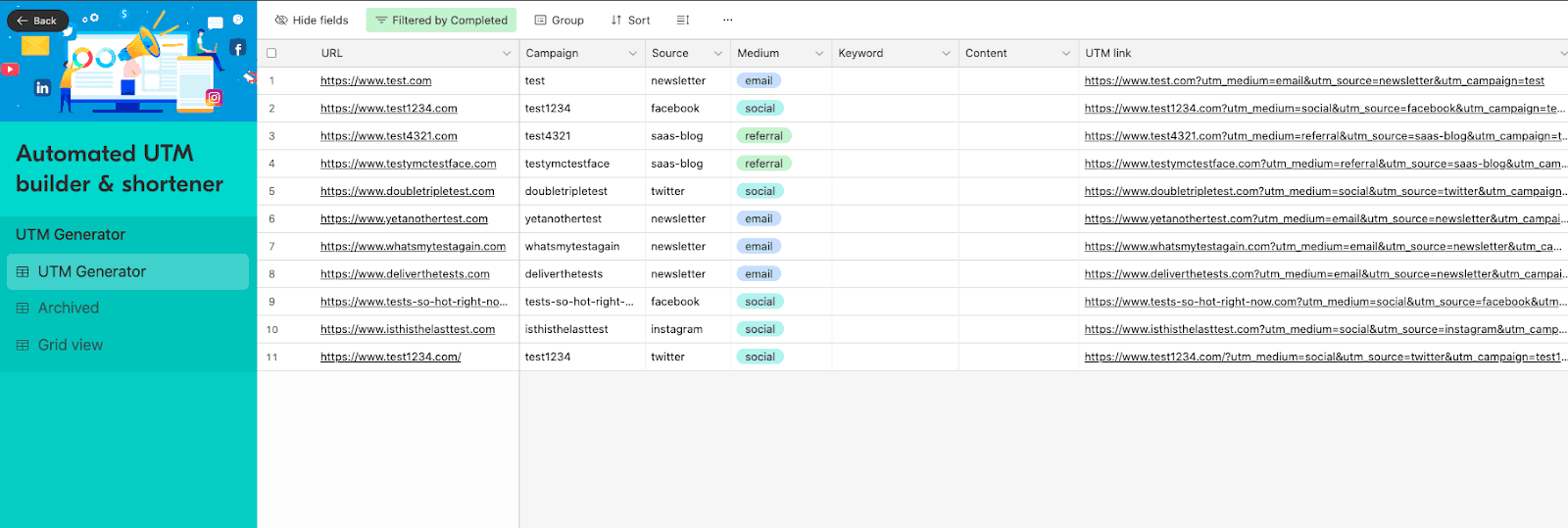
Here’s an Airtable template to manage and build your UTMs tracking code.
Real-time analytics
Imagine you're a chef in a kitchen – real-time analytics let you taste the soup as it's cooking.
You don't want to wait until the end to know if it needs more salt, right? Use tools that show you how your campaign is performing at this very moment.
Watching real-time analytics helps you adjust the heat, simmer, and serve up success.
See a spike in traffic after a blog post goes live? That's the flavor of instant feedback!
A/B testing
Remember the time you swapped out one word in your email subject line and your open rates shot through the roof?
That's A/B testing magic for you.
Experiment with different versions of your landing pages, ads, or emails. Serve 'em up to your audience like A/B testing taste tests.
Keep what resonates; toss what falls flat. Bold changes may lead to bold results, and you want to be the one calling the shots with the clear winners in your campaign's creative showdown.
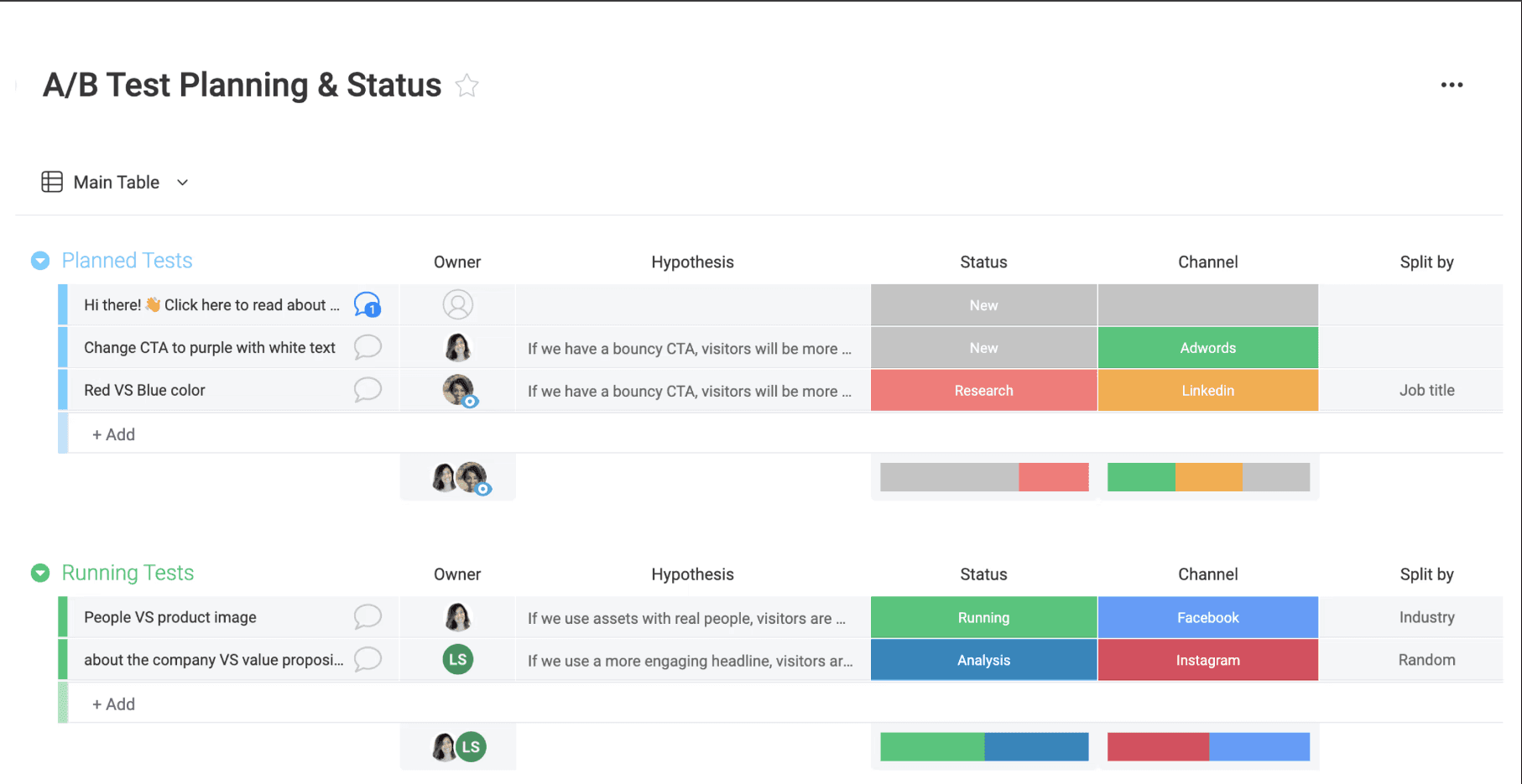
Try this A/B testing and planning template by Monday.com
Marketing campaign metrics
When assessing the performance of your marketing campaigns, you've got to keep an eye on the right metrics to truly gauge their success.
Think of metrics as your campaign's vital signs – without them, you're flying blind.
First up, conversion rates. This is a big one. It tells you the percentage of your audience who took the action you wanted — whether that's making a purchase, signing up for a newsletter, or filling out a contact form.
Higher conversion rates generally point to a healthy campaign.
Next, let's talk about ROI. It’s all about the return on your investment.
Are you making more money from the campaign than what you're putting into it?
It’s simple math but speaks volumes about the campaign's financial impact.
Then there's Customer Acquisition Cost (CAC). This digs into how much you’re spending to snag each new customer.
You want this number as low as possible, without sacrificing quality.
And don’t forget about your Click-Through Rate (CTR), which reveals how compelling your audience finds your ad or content.
The higher the CTR, the more irresistible your materials are.
Remember, tracking your campaign’s performance with these metrics isn’t just a post-mortem activity.
It's about making real-time adjustments to keep the heart of your campaign beating strong.
1. Email metrics
When running email marketing campaigns, it's essential to monitor specific metrics to gauge their effectiveness.
Here's a rundown of the critical stats you should keep an eye on:
Click-through rate (CTR): This measures the percentage of email recipients who click on one or more links contained in an email. It's a straightforward gauge of how well your email content is driving engagement.
Bounce rate: The bounce rate tallies the rate of sent emails that could not be delivered to the recipient's inbox. A high bounce rate could signal issues with your email list or your email's content, triggering spam filters.
Conversion rate: The conversion rate is the percentage of email recipients who completed a desired action, such as making a purchase or signing up for a webinar, after clicking on a link in your email.
2. Paid ads metrics
Here's a quick glance at some paid advertising metrics tied to your email campaigns:
Remember, beyond numbers, you want to ensure that you're building genuine connections with your audience.
The data is your friend; it's not just about stats but about the real people behind those clicks and conversions.
Keep track of these metrics to not just reach your audience but to resonate with them.
3. Social media metrics
When diving into social media for marketing, it's crucial that you wrap your head around certain metrics to gauge the success of your campaigns.
Here's a breakdown in plain English.
Engagements: This includes likes, shares, and comments. They're vital because they show how much your audience is interacting with your content.
If you're getting a ton of likes on a post, pat yourself on the back; you've hit the sweet spot of what your audience loves.
Follows: When someone follows you, it's like they're saying, "Hey, I dig your style, and I want to see more." More followers generally mean a wider audience for your content.
Click-Through Rates (CTR): Imagine this as the percentage of people who've seen your post and then felt compelled to actually click on the link.
It's a telling sign of whether your content is effective at moving your audience to action.
To keep an eye on these metrics, consider using tools for managing social media; they can help you track performance over time.
Remember, these are more than just numbers; they represent real humans interacting with your brand.
In the realm of social media metrics, think of yourself as a detective.
Each metric provides clues on how you can refine your strategy, so pay close attention.
For example, if your CTR is low, it might be time to revamp your call-to-action.
Keep experimenting, and use these insights to steer your social media ship towards more engaging waters.
4. Lead magnet/content offer metrics
When you're running a marketing campaign, your lead magnets or content offers are the frontline soldiers.
They're out there, braving the chaos to grab those leads.
And just like any campaign, you need to keep your eyes on the stats to see how well your soldiers are doing.
Opt-in Rate: This tells you the percentage of visitors who become leads by taking the bait of your lead magnet.
Higher is better, obviously.
To calculate it, divide the number of new opt-ins by the total number of visitors and multiply by 100.
Total Visitors: 1000
New Opt-ins: 150
Opt-in Rate: 15%
Cost per Opt-in: This one hits the wallet—it's how much you're spending to snag each lead. Divide your total campaign costs by the number of new opt-ins to get this number.
Campaign Cost: $200
New Opt-ins: 150
Cost per Opt-in: $1.33
Follow-up Email Open Rate: You've got their email; now let's see if they're actually reading your stuff.
The follow-up email open rate hinges on the hook of your subject line and the relevance of your content.
Opt-in Conversion Rate: The crème de la crème of metrics—how many of those who opt-in actually take the plunge and convert?
You'll get this by tracking the leads who end up buying or signing up for whatever you're offering after grabbing that magnet.
Remember, these metrics aren't just numbers; they're the pulse of your campaign.
Tune into how they change as you tweak your lead magnet. Noticed a dip in your open rates? Maybe it's time to jazz up those email subjects.
Seeing a stellar opt-in rate but a so-so conversion rate?
That's a signal to ensure what you're offering aligns with what your audience really wants.
Keep track, tweak, and test.
You've got this!
5. Content marketing metrics
When you're knee-deep in content marketing, it's crucial to know if your efforts are paying off.
Metrics act like a GPS, guiding you towards success and alerting you when you need to change course.
Here's a breakdown of key content marketing metrics you should keep an eye on:
Clicks: This is the bread and butter of engagement tracking. It shows how many people found your content intriguing enough to make a move.
Impressions: Impressions give you a sense of how many eyes see your content. Remember, high impressions with low clicks might signal a need to spruce up your headlines.
CTR (Click-Through Rate): CTR ties clicks and impressions together, revealing the percentage of viewers who click through. Aim for a high CTR; it means your content's not just seen—it's compelling.
Take these metrics as your toolkit—a way to measure what works and what doesn't.
Your marketing campaign isn't just about throwing content into the void.
It's about making connections, sparking interest, and converting that interest into action.
Keep tabs on these metrics, tweak your strategy using real-time feedback, and watch your content work harder for you.
Marketing campaign examples
This year witnessed exciting strides in marketing with campaigns that not only created buzz but also set new benchmarks in creativity.
1. Nike
Nike's "Just Do It" stands tall as a testament to the perseverance of brand identity.

The movie's tease with a pink canvas and a release date captivated your imagination and proved that sometimes, simplicity wins.
3. Fiat
Fiat threw caution to the wind with "Operation No Grey," a vibrant statement that greeted viewers with a splash of orange.
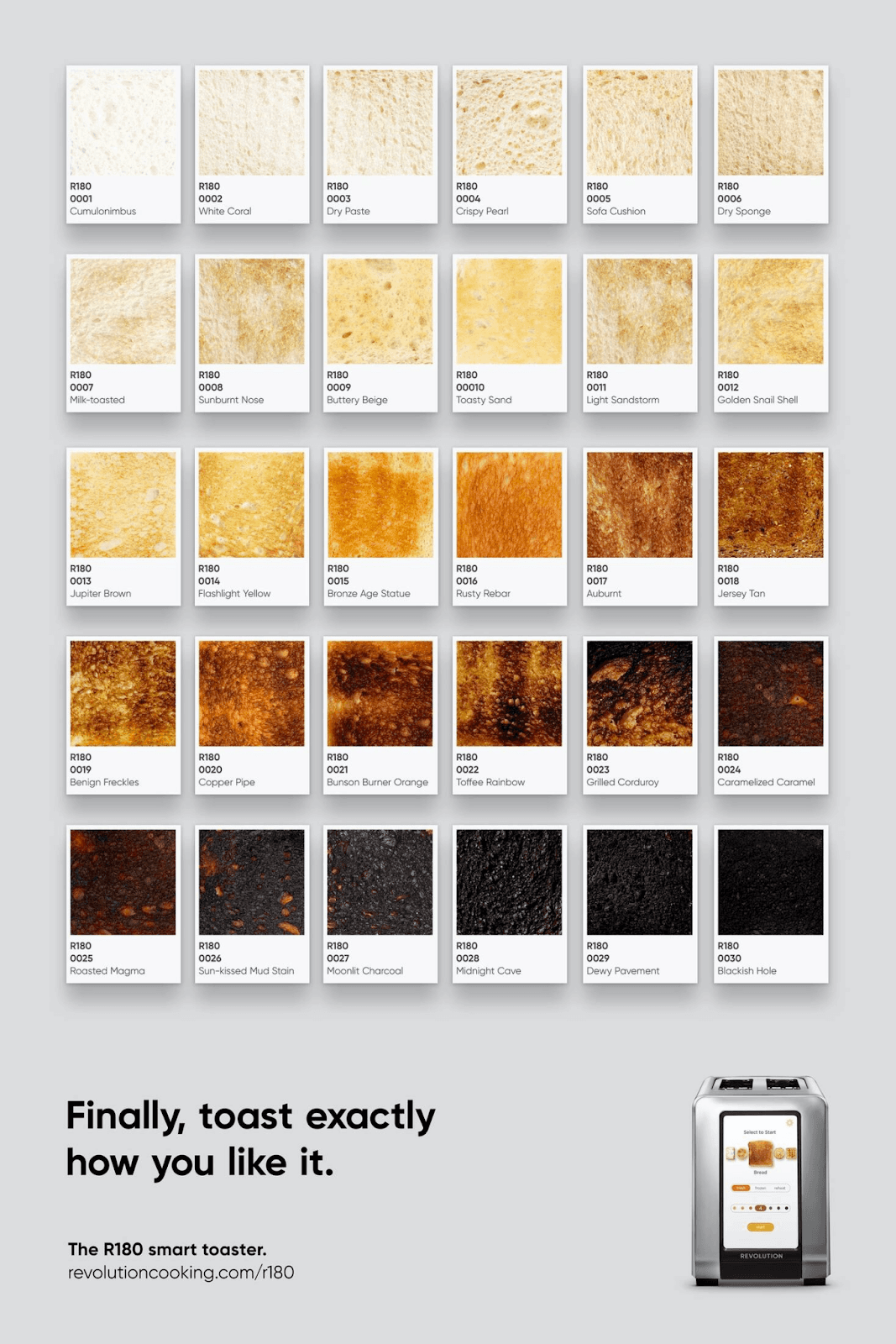
From swooshes to swatches, these examples set the stage for you to think outside the box and marry daring ideas with your brand's voice.
With campaigns like these, your message won’t just be heard; it’ll echo.
Generate 50 Campaign Variations in Minutes with DFIRST AI

DFIRST is a platform where you connect AI tools on a canvas to create marketing campaigns faster. Instead of juggling multiple apps and manual work, you build workflows that handle everything from research to final ads.
Key Features You’ll Love
💚 Visual Workflow Builder: Design your own marketing workflows with an intuitive interface
💚 Data Room: Upload and analyze your business information for AI-powered insights
💚 Advanced Research Tools: Connect with real-time market intelligence
💚 Content Generation: Craft high-quality copy using multiple LLMs (Claude, GPT, Gemini & more)
💚 Visual Creation: Design graphics with DALL-E 3, Stable Diffusion, and other image tools
💚 Video Generation: Produce high quality videos with VEO 3, Sora, and other AI video generation tools
💚 Workflow Automation: Link sections for smooth data flow throughout your campaigns
No credit card needed. Instant access. Try now for free.
It's a wrap
Remember the days when marketing campaigns were a guessing game? No more!
With the right tools and strategies, you can craft engaging campaigns that resonate with your audience and drive real results.
This comprehensive guide has equipped you with the knowledge to:
Define your goals and target audience
Develop a winning marketing strategy
Choose the right channels and tactics
Track and optimize your campaigns for success
But don't just stop here! Take action, and:
Try Digital First AI to create and execute marketing campaigns in minutes.
This powerful tool streamlines your workflow, generates high-performing content, and helps you track your progress with ease.
P.S. Don't forget to share this valuable guide with your fellow marketers! They'll thank you for it.




